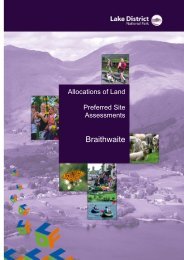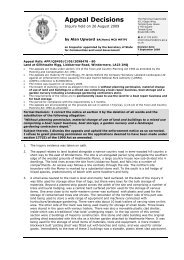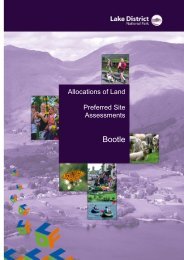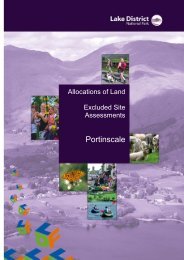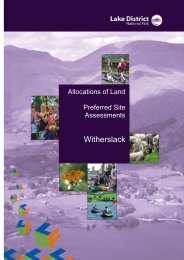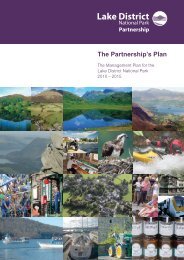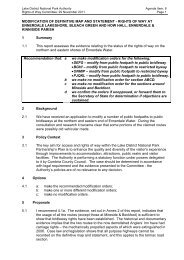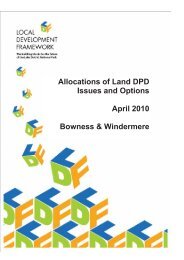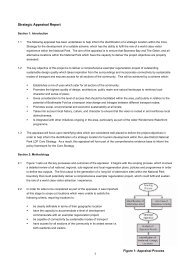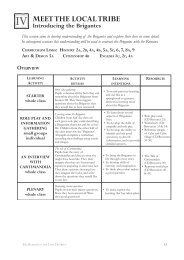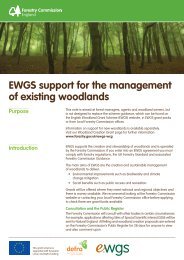Tree survey guidance note (PDF) - Lake District National Park
Tree survey guidance note (PDF) - Lake District National Park
Tree survey guidance note (PDF) - Lake District National Park
You also want an ePaper? Increase the reach of your titles
YUMPU automatically turns print PDFs into web optimized ePapers that Google loves.
<strong>Tree</strong>s<br />
What drawings do I need to include with my planning application?<br />
www.lakedistrict.gov.uk<br />
May 2012
Introduction<br />
<strong>Tree</strong>s are an important part of the <strong>Lake</strong> <strong>District</strong> landscape. <strong>Tree</strong>s provide habitat for plants and animals, and<br />
make our landscape, towns, villages and gardens more green and appealing. When we consider a planning<br />
application we have to take account of any trees on (or near) the site, which might be affected. In some cases we<br />
may condition that existing trees are preserved, or that new trees are planted. We can also serve tree preservation<br />
orders (TPOs) if necessary.<br />
In order to properly consider a proposal we must have enough information to understand its impact on trees.<br />
Sometimes this will mean we need information about trees before we will validate a planning application.<br />
What information do I need to provide?<br />
To ensure we meet our obligations, where trees could be affected we will need information to help us understand<br />
what impacts a scheme will have.<br />
Box 1 below shows what information about trees we will expect before we validate any application for:<br />
• Householder Planning Permission<br />
• Full Planning Permission<br />
• Outline Planning Permission<br />
• Reserved Matters Consent<br />
• Conservation Area Consent<br />
• Minor Material Amendments<br />
Box 1: <strong>Tree</strong> information requirements flow chart<br />
Are there any trees within 15m of<br />
the proposed development (on<br />
applicant’s or neighbour’s land)?<br />
No<br />
Submit application without<br />
further information<br />
Yes<br />
Produce tree constraints plan -<br />
see opposite<br />
Does tree constraints plan show<br />
development in the root protection<br />
area or canopy of trees?<br />
No<br />
Submit application including<br />
tree constraints plan<br />
Yes<br />
Full tree <strong>survey</strong> by qualified<br />
arboriculturalist required<br />
www.lakedistrict.gov.uk
Can I do a full <strong>Tree</strong> Survey myself?<br />
No. A full tree <strong>survey</strong> will need to be done by a suitably qualified person.<br />
Can I do a <strong>Tree</strong> Constraints Plan myself?<br />
You might be able to produce the tree constraints plan yourself. If you are employing someone to draw plans for<br />
you they will be able to include the necessary information on the site layout plan.<br />
What is a <strong>Tree</strong> Constraints Plan?<br />
A <strong>Tree</strong> Constraints Plan is a site layout plan drawn to scale and showing existing buildings, the proposed<br />
development, as well as any trees on or adjacent to the site. The tree constraints plan will show the stem, canopy<br />
spread, and root protection area of each tree. Two simple examples of tree constraints plans are shown in Box 2<br />
and Box 3 overleaf.<br />
Top tip: A <strong>Tree</strong> Constraints Plan should be produced at an early stage, and should be used as a design tool. It<br />
is much better to consider trees at the start than to have planning permission refused because trees were not<br />
properly considered in the design!<br />
What is the Root Protection Area (RPA)?<br />
The root protection area is the minimum area (in square metres) which should be left undisturbed around each<br />
retained tree to maintain the tree’s viability. In this area the protection of roots and soil structure is treated as a<br />
priority. To avoid damage to the roots and rooting environment of trees, development within the root protection<br />
area should be avoided where possible.<br />
For single stem trees the Root Protection Area should be calculated as an area equivalent to a circle with a radius<br />
12 times the stem diameter. For trees with more than one stem, one of the two calculation methods below should<br />
be used. In all cases, the stem diameter(s) should be measured as shown in Box 4.<br />
a) For trees with two to five stems, the combined stem diameter should be calculated as follows:<br />
(stem diameter 1) 2 + (stem diameter 2) 2 ... + (stem diameter 5) 2<br />
b) For trees with more than five stems, the combined stem diameter should be calculated as follows:<br />
(mean stem diameter) 2 × number of stems<br />
The RPA for each tree should initially be plotted as a circle centred on the base of the stem. Where pre-existing site<br />
conditions or other factors indicate that rooting has occurred asymmetrically, a polygon of equivalent area should<br />
be produced. Modifications to the shape of the RPA should reflect a soundly<br />
based arboricultural assessment of likely root distribution.<br />
Any deviation in the RPA from the original circular plot should take account of the following factors whilst still<br />
providing adequate protection for the root system:<br />
• the morphology and disposition of the roots, when influenced by past or existing site conditions (e.g. the<br />
presence of roads, structures and underground apparatus);<br />
• topography and drainage;<br />
• the soil type and structure;<br />
• the likely tolerance of the tree to root disturbance or damage, based on factors such as species, age, condition<br />
and past management.<br />
The calculated RPA for each tree should be capped to 707m 2 in all cases.<br />
www.lakedistrict.gov.uk
Box 2<br />
Example 1: <strong>Tree</strong> Constraints Plan - Full <strong>survey</strong> not required<br />
In this example a tree constraints plan has been produced because there are trees<br />
within 15m of the proposed extension. But the proposed extension does not<br />
encroach into any of the root protection areas, so a full arboricultural <strong>survey</strong> is not<br />
required for us to validate an application.<br />
A<br />
B<br />
<strong>Tree</strong> Details<br />
<strong>Tree</strong> A - stemØ 75cm, rpa radius 900cm<br />
<strong>Tree</strong> B - stemØ 75cm, rpa radius 900cm<br />
<strong>Tree</strong> C - stemØ 125cm, rpa radius1500cm<br />
<strong>Tree</strong> D - stemØ 27cm, rpa radius 324cm<br />
<strong>Tree</strong> E - stemØ 27cm, rpa radius 324cm<br />
<strong>Tree</strong> F - stemØ 53cm, rpa radius 636cm<br />
<strong>Tree</strong> G - stemØ 36cm, rpa radius 432cm<br />
<strong>Tree</strong> H - stemØ 51cm, rpa radius 612cm<br />
D<br />
E<br />
F<br />
G<br />
Stem<br />
Canopy<br />
RPA<br />
C<br />
H<br />
Proposed<br />
Existing<br />
0 5 10 15m<br />
Box 3<br />
Example 2: <strong>Tree</strong> Constraints Plan - Full <strong>survey</strong> required<br />
In this example a tree constraints plan has been produced because there are trees<br />
within 15m of the proposed extension. The plan shows that proposed extension<br />
encroaches into the root protection areas of trees B and C, so a full arboricultural<br />
<strong>survey</strong> is required before we will validate an application.<br />
A<br />
<strong>Tree</strong> Details<br />
<strong>Tree</strong> A - stemØ 75cm, rpa radius 900cm<br />
<strong>Tree</strong> B - stemØ 103cm, rpa radius 1236cm<br />
<strong>Tree</strong> C - stemØ 125cm, rpa radius1500cm<br />
<strong>Tree</strong> D - stemØ 27cm, rpa radius 324cm<br />
<strong>Tree</strong> E - stemØ 27cm, rpa radius 324cm<br />
<strong>Tree</strong> F - stemØ 53cm, rpa radius 636cm<br />
<strong>Tree</strong> G - stemØ 36cm, rpa radius 432cm<br />
<strong>Tree</strong> H - stemØ 51cm, rpa radius 612cm<br />
D<br />
B<br />
Stem<br />
E<br />
F<br />
G<br />
Canopy<br />
RPA<br />
C<br />
H<br />
Proposed<br />
Existing<br />
0 5 10 15m
Box 4: Measuring stem diameter<br />
1.5m<br />
1.5m<br />
Stem diameter measured at 1.5m<br />
above ground level<br />
Measurement on<br />
sloping ground<br />
1.5m<br />
1.5m<br />
Measurement of a tree with more than<br />
one stem at 1.5m above the ground<br />
Measurement of stem with irregular<br />
swelling made at the narrowest point<br />
below the swelling<br />
1.5m<br />
1.5m<br />
1.5m<br />
1.5m<br />
<strong>Tree</strong>s with low branching measured<br />
at lowest point below the fork<br />
Measurement of multi- stemmed tree<br />
- height varies<br />
www.lakedistrict.gov.uk
Useful reading:<br />
• BS5837: <strong>Tree</strong>s in Relation to Construction<br />
• Volume 4: NJUG Guidelines For The Planning, Installation And Maintenance Of Utility<br />
Apparatus In Proximity To <strong>Tree</strong>s - available online at www.njug.org.uk<br />
• Veteran <strong>Tree</strong>s: A Guide to Good Management -<br />
available online at http://naturalengland.etraderstores.com/NaturalEnglandShop/IN13<br />
Contact us<br />
<strong>Lake</strong> <strong>District</strong> <strong>National</strong> <strong>Park</strong> Authority<br />
Murley Moss Business <strong>Park</strong><br />
Oxenholme Road<br />
Kendal<br />
LA9 7RL<br />
Telephone: 01539 724555<br />
Fax: 01539 740822<br />
Minicom: 01539 792690<br />
Email: hq@lakedistrict.gov.uk<br />
www.lakedistrict.gov.uk<br />
For specific advice relating to trees, you<br />
should contact our <strong>Tree</strong>s and Woodland<br />
Advisor (part-time).<br />
A duty planning officer is available Monday<br />
to Friday between 9.30am and 12.30pm<br />
to talk to either by phone or in person at<br />
our Kendal offices. We also run planning<br />
surgeries in Keswick, Glenridding and<br />
Gosforth where you can meet an officer in<br />
person. Please see our website or call us for<br />
details of surgery times and locations.



